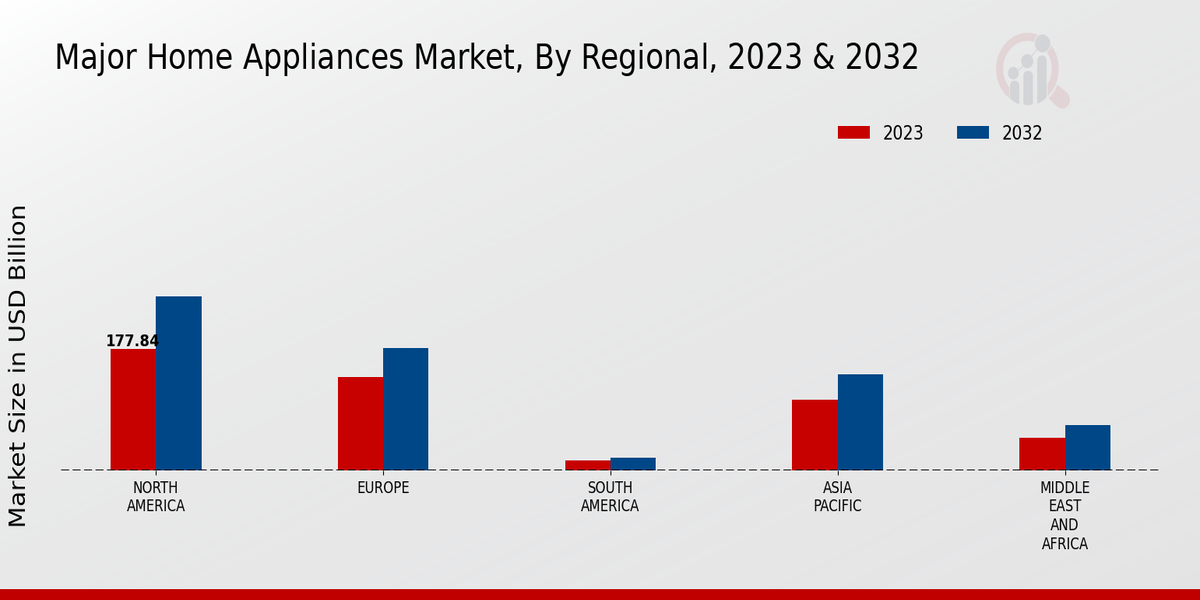Aging Population
The aging population presents a unique driver for the Global Home Appliances Market Industry. As the global demographic landscape shifts, older adults are increasingly seeking appliances that enhance their quality of life and promote independence. Products designed with user-friendly features, such as easy-to-read displays and ergonomic designs, are becoming essential in catering to this demographic. This trend is likely to drive demand for home appliances that prioritize safety and accessibility. As the population ages, manufacturers may need to adapt their offerings to meet the specific needs of older consumers, potentially leading to increased market opportunities in this segment.
Urbanization Trends
Urbanization trends significantly influence the Global Home Appliances Market Industry, as more people migrate to urban areas seeking better opportunities. This demographic shift leads to increased demand for home appliances that cater to the needs of smaller living spaces, such as compact washing machines and multifunctional kitchen devices. Urban dwellers often prioritize convenience and efficiency, driving manufacturers to innovate and adapt their product offerings. The growing urban population is expected to contribute to the market's expansion, with projections indicating a compound annual growth rate of 7.84% from 2025 to 2035. This trend underscores the importance of understanding urban consumer behavior in shaping future product development.
Rising Disposable Income
The Global Home Appliances Market Industry experiences a notable boost from the increasing disposable income of consumers worldwide. As individuals and families gain more financial freedom, they are more inclined to invest in modern home appliances that enhance convenience and efficiency. This trend is particularly evident in emerging economies, where rising income levels correlate with a growing demand for innovative appliances. In 2024, the market is projected to reach 235.94 USD Billion, reflecting the purchasing power of consumers who prioritize quality and technology in their home appliances. This shift indicates a potential for sustained growth in the industry as disposable incomes continue to rise.
Market Growth Projections
The Global Home Appliances Market Industry is poised for substantial growth, with projections indicating a market size of 235.94 USD Billion in 2024 and an anticipated increase to 541.32 USD Billion by 2035. This growth trajectory suggests a compound annual growth rate of 7.84% from 2025 to 2035. Such projections highlight the industry's resilience and adaptability in meeting evolving consumer demands. Factors contributing to this growth include technological advancements, urbanization, and changing consumer preferences towards sustainability. As the market expands, stakeholders must remain vigilant in identifying emerging trends and consumer behaviors to capitalize on the opportunities presented by this dynamic industry.
Technological Advancements
Technological advancements play a pivotal role in shaping the Global Home Appliances Market Industry. Innovations such as smart appliances, energy-efficient models, and IoT integration are transforming how consumers interact with their home devices. For instance, smart refrigerators that monitor food inventory and suggest recipes are gaining popularity. The integration of technology not only enhances user experience but also promotes energy conservation, aligning with global sustainability goals. As the industry evolves, the demand for technologically advanced appliances is expected to surge, contributing to the market's projected growth to 541.32 USD Billion by 2035. This trend suggests a significant shift towards smarter living environments.
Sustainability and Eco-Friendliness
Sustainability and eco-friendliness are becoming central themes in the Global Home Appliances Market Industry. Consumers are increasingly aware of their environmental impact and are seeking appliances that minimize energy consumption and reduce waste. Manufacturers are responding by developing energy-efficient products that comply with stringent environmental regulations. For example, appliances with Energy Star ratings are gaining traction among eco-conscious consumers. This shift towards sustainable practices not only meets consumer demand but also aligns with global efforts to combat climate change. As sustainability becomes a key purchasing criterion, the market is likely to witness a surge in eco-friendly appliance sales, further driving its growth.














